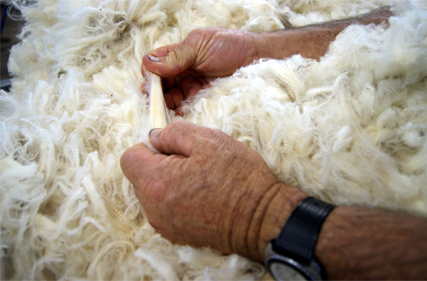 The wool market is facing some serious challenges in the short term. Business confidence in our major markets are being put under enormous pressure by the poor economic conditions in China, UK, Europe and the US. The wool market is facing some serious challenges in the short term. Business confidence in our major markets are being put under enormous pressure by the poor economic conditions in China, UK, Europe and the US.
Most of the pressure is ruminating from raging inflation driven largely by escalating energy costs. This confidence will not resolve until there is some change in the unrest in Russian V Ukraine war. Adding further pressure to the wool market is the re-election of the Chinese President Xi Jinping and the CCP appointment of “president for life” impacting enormously on the Chinese Economy already under huge economic pressure from his COVID shutdown policy. Next week the national offering totals 35,949 bales and the lower volume is reflecting the impact of the extraordinary weather conditions being experienced in the eastern states over the past 2 months. As you would all be aware, shearing has been substantially delayed as well as the increased difficulty of getting wool from farms to broker’s stores. There are many main transport routes being closed or severely restricted which may have an impact of wool deliveries to the dumps post sale. The AWEX EMI closed on 1261c – down 37c at auction sales in Australia. Merino Fleece led the weakening price trend, 17-20.5 µ MPG’s fell between 20-50c on the opening day (Wednesday) and continued to fall on Thursday with losses in the MPG’s. The more stylish and better specified fleece lots attracted slightly better competition, whilst the lower style, higher VM and poorly classed and specified lots were more affected. Merino Skirtings seemed to resist the fleece trend temporarily but as news filtered between the selling rooms of the weakening trend in the fleece, the skirtings followed suit falling 20c across the board on Wednesday and fell another 20c on Thursday before regaining 10c in the final hour. Crossbreds opened 5-10c cheaper on both days with the coarser microns (>29) remaining largely unchanged with the under prepared lots most affected. Well classed and specified lots were least affected as the Crossbred sector is still trading at historic low levels and desperately looking for some sign of positivity. Cardings generally fared pretty well compared to the combing wools. Small losses of 6 and 14c were recorded in the eastern centres whilst the Western MC rose 3c. Crossbred oddments seem to be finding balance in seller and buyer expectations, allowing better clearance at the low price basis. |
| The AWTA released its October Sampling figures this week showing a small increase in bales sampled in October of .6% and a Year to Date total of 105 MKG – up just .2%. There may be some delays in getting samples from the regional source stores to the AWTA lab in Kensington Victoria. To date, this has not been an issue for the Moses & Son sampling centres however other regionals sampling stores may be affected.
~ Marty Moses, Moses and Son |
